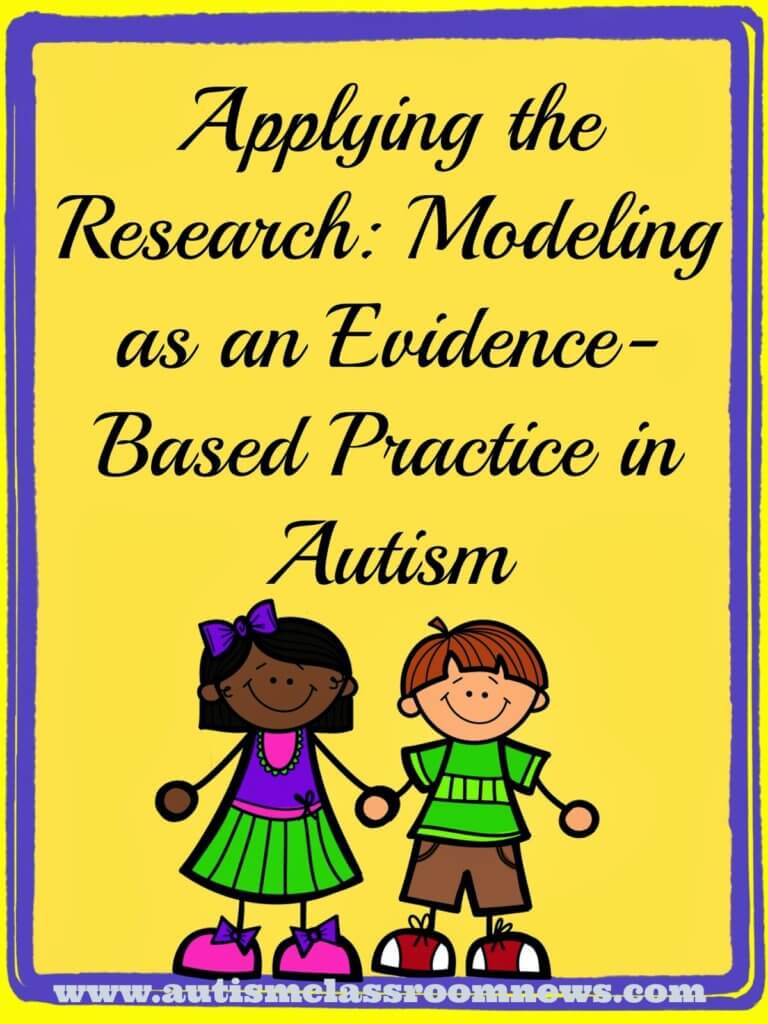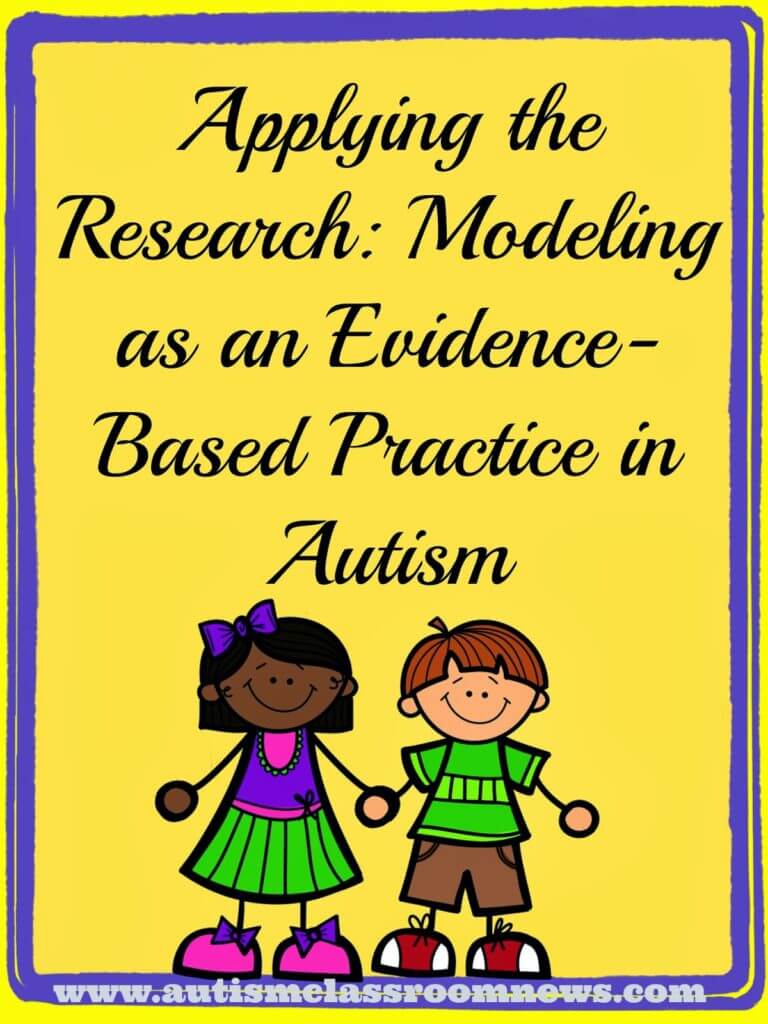I have a blog post up on A Special Sparkle today
5 Questions to Ask Before Writing an IEP Goal. Check it out!
Continuing my series on the new evidence-based practice (EBP), I talked about the requirements to be considered an EBP HERE. In the last post I talked about exercise as a strategy for preventing and addressing challenging behavior. Today I want to talk about modeling. There are a number of ways that modeling can be used. I’ve talked about video modeling as a strategy Here, Here, and Here. Video modeling was actually included in the 2011 report of EBPs. In the 2014 report they added in-vivo modeling as an EBP. In-vivo modeling is simply using a live model, occurring at the time. We use it all the time when we ask a peer to show a student how to interact on the playground or a teacher demonstrates how to complete a math problem on the board. We have long known that modeling has been an effective intervention for lots of different populations but there hasn’t been much research until recently on the use of in-vivo modeling for children with ASD, particularly in studies where the modeling effects could be isolated. Given the difficulty that many children with ASD have with imitation, there is reason to believe that the general modeling research may not apply. However, with the increase of the use and study of video modeling, there has been an increase in the study of all types of modeling.
What Does the Research Say?
The EBP report indicated that modeling has been shown to be effective with toddlers through 22 year olds for a wide variety of skills (Cox, 2013). There is only one study that I’m aware of that actually compares in-vivo modeling with video modeling. Charlop-Christy, Le, and Freeman (2000) directly compared the 2 and found a couple of interesting findings. Four of the 5 students acquired the skills that were modeled more quickly with video modeling than in-vivo modeling. The students also generalized the skills more frequently with video modeling than in-vivo modeling. These results have to be interpreted with caution because it’s only one study with only 5 participants. However, it does lend to the idea that video modeling might be a more effective way to go. Both, however, were effective at teaching the skills. It should also be noted that modeling is an important skill because it is how most skills are taught in school settings as well as out of schools. If you think about it, most things we learned in school started with the teacher demonstrated the skill. We learn on the job in the same way–first we observe another teacher, then we practice. Consequently, Cooper, Heron and Heward (2006) point out the importance of teaching children with autism to imitation specifically so they can take advantage of and learn from those natural models in the real-world environment. Consequently, we look at imitation as being an enabling skill, in that it opens doors to learning more independently and from more sources. As such it is important that we target imitation for those students who struggle with it.
Practice Point: Applying the Research
Clearly we use in-vivo modeling frequently throughout our daily routines regularly. Here are some tips that help to increase the effectiveness of modeling to teach new skills.
1. Recruit models that are similar in characteristic to the target student.
Look for similar age or slightly older models who have similar characteristics (e.g., size, physical characteristics, age) to enhance the likelihood that the target student will imitate that person.
2. Reinforce the model
There is early research in modeling literature that shows that reinforcing the model for the skill you are targeting increases the likelihood that the behavior will be imitated. There is no reason to think that would be different for students with ASD.
3. Follow modeling with practice
Modeling is typically most effective when used in conjunction with other ABA strategies like practicing with feedback and reinforcement. Given that generalization may be limited based on Charlop-Christy et al. (2000), it will be even more important to incorporate opportunities to practice the skill in a variety of environments after the modeling sessions to assure that the skills maintain and are used in the everyday environment.
How do you use modeling with your students? Do you feel it is more or less effective than video modeling? Is it easier or harder to use? Sound off in the comments.
Until next time,
References:
modeling for teaching children with autism. Journal of Autism and Developmental Disorders, 30(6),
537-552. doi: 10.1023/A:1005635326276
Cooper, J.O., Heron, T.E., & Heward, W.L. (2006). Applied behavior analysis, 2nd ed. New Jersey: Prentice Hall.
Cox, A. W. (2013) Modeling fact sheet. Chapel Hill: The University of North Carolina, Frank Porter Graham Child Devel-
opment Institute, The National Professional Development Center on Autism Spectrum Disorders.








